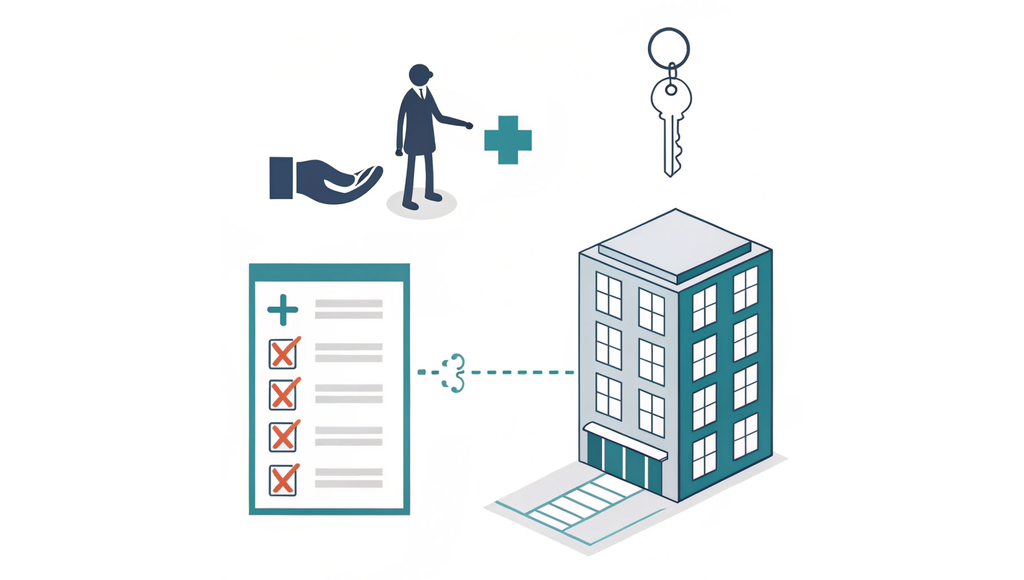
The deal is closed, the funds are in the bank, and the handshake is a memory. For many physician-owners, this moment feels like the finish line. In reality, it’s the start of a new race defined by rigorous financial oversight. The simple profit and loss statements that once ran your practice are replaced by a demand for granular data that can feel overwhelming.
This shift isn’t arbitrary. It’s driven by a wave of new federal and state regulations designed to increase transparency in healthcare transactions. Your new parent organization isn’t just being difficult; they are responding to intense regulatory pressure that now directly impacts how your practice operates.
Understanding these new reporting obligations is fundamental to a smooth transition. This guide breaks down what’s required, why it’s happening, and how you can adapt successfully. For a broader overview of all the transformations you can expect, you can always refer back to our main guide on what actually happens after you sell your medical practice.
Why Reporting Got So Tough: The New Regulatory Environment
In recent years, regulators like the Federal Trade Commission (FTC) and Department of Justice (DOJ) have intensified their scrutiny of healthcare mergers, especially those involving private equity. New rules, like the updated Hart-Scott-Rodino (HSR) Act effective February 2025, now demand an unprecedented amount of information before a deal can even be approved.
Acquirers must now submit detailed data on revenue streams, service overlaps, and post-deal organizational charts. This pre-close scramble for information sets the tone for post-close operations. Buyers build the systems to gather this data during diligence, and they will expect your practice to feed those systems with accurate, timely information long after the sale.
The goals of this heightened regulatory focus include:
* Analyzing potential anti-competitive effects with greater precision.
* Understanding the true ownership structures, particularly with PE-backed platforms and roll-ups.
* Monitoring how consolidation impacts healthcare costs and access in local markets.
Because your acquirer is now on the hook to provide this information, they will pass those reporting demands down to you.
The New Reporting Cadence: What You’ll Be Asked to Provide
Forget your old QuickBooks file. Your practice is now part of a larger financial ecosystem, and your reporting must align with its standards from day one. These changes range from immediate system overhauls to ongoing, detailed data requests.
Immediate Changes (Day 1-90)
The most immediate shift happens in your billing and accounting. Expect to transition to the acquirer’s platform almost overnight. This is a crucial step in the first 100 days after an acquisition because it allows the parent company to control the revenue cycle and ensure consistent cash flow. Staff will need training on new software, coding standards, and documentation protocols. These are not just operational changes; they are the foundational elements of the new financial structure.
Ongoing Granular Reporting
Beyond initial system changes, you will be responsible for providing a steady stream of detailed financial and operational data. This information goes far beyond a basic P&L, providing the acquirer with deep insight into the practice’s performance.
| Category | Example Requirements | Why It Matters to the Acquirer |
|---|---|---|
| Revenue Disclosures | Breakdowns of revenue by specific service line, individual provider, payer class, and even patient type. | Helps them understand concentration risk, identify profitable services for expansion, and manage payer contracts more effectively. |
| Provider-Level Metrics | Reports on individual physician productivity (e.g., wRVUs), patient visit counts, and contributed margin. | This data directly informs new physician compensation models and helps in benchmarking your practice’s financials against sister locations. |
| Service & Market Overlap | Detailed descriptions of any geographic or service-line overlap with other practices in the acquirer’s network. | This is required for ongoing antitrust compliance and helps the parent company form regional growth strategies. |
| Ownership & Control | Updated charts tracking all direct and indirect owners, especially in complex PE or MSO structures. | Regulators demand this transparency to track consolidation trends and enforce compliance. |
Beyond Federal Rules: The Rise of State-Level Scrutiny
Compliance doesn’t stop at the federal level. A growing number of states are enacting their own stringent laws governing healthcare transactions, creating a complex web of regional requirements.
Massachusetts provides a clear example. With its H.5159 law, effective April 2025, the state now requires extensive disclosure of private equity and real estate investment trust (REIT) involvement in any healthcare acquisition. More pointedly, it mandates five years of post-transaction financial and operational monitoring. This means your practice could be submitting detailed compliance reports half a decade after the sale.
Other states, like Minnesota, are following suit with proposed legislation that gives state attorneys general veto power over certain private equity buyouts and requires public reporting of ownership. This trend underscores the importance of having advisors who understand both federal and local law. These state-specific rules often intersect with federal statutes, making expert guidance on navigating Stark Law and Anti-Kickback regulations even more critical.
The Bottom Line: Practical Impacts on Your Practice
These new reporting standards are not just administrative tasks; they have tangible consequences for your practice’s budget, staffing, and strategy.
1. Increased Compliance Costs: Getting this right requires specialized expertise. Mid-sized practices have seen legal and consulting costs associated with compliance rise by 20–30% since the new HSR rules were announced. These are real costs that must be factored into your post-sale financial planning.
2. A New Financial “Quarterback”: The person who managed your books before the sale may not be equipped to handle this level of reporting. Acquired practices often need a more sophisticated financial function, whether it’s through a shared service from the parent company or by hiring a controller-level professional.
3. Data-Driven Performance Culture: Every report you submit feeds into a larger performance dashboard. Your practice will be measured and managed based on the data you provide. This directly impacts everything from annual budgets and staffing decisions to your own performance-based compensation.
Adapting for Success: Your Post-Acquisition Financial Playbook
The new world of financial reporting is demanding, but it is manageable with a proactive approach.
First, assemble your post-close team. You need advisors who are deeply familiar with today’s regulatory environment. This includes compliance lawyers and financial consultants who specialize in healthcare M&A and can translate complex rules into actionable steps.
Second, assess your systems. Can your EMR and accounting software easily generate reports on provider-level revenue or service-line profitability? If not, you may need to invest in upgrades or work with your new parent company’s IT team to ensure you can pull the required data efficiently.
Finally, prioritize accuracy and documentation. New regulations in states like Massachusetts carry heightened penalties for misrepresentation in filings. The stakes are too high for guesswork. Ensure every report is accurate and well-documented.
The transition to a more demanding reporting structure is a core part of the post-acquisition financial management process. It requires diligence, expertise, and a willingness to adapt.
If you are navigating these changes or want to prepare for a future sale, our team at SovDoc has the expertise to guide you. Contact us for a consultation to understand how these requirements will impact your specific practice and future goals.
Frequently Asked Questions
What financial reporting changes should I expect immediately after selling my medical practice?
Immediately after the acquisition, your practice will need to transition to the new owner’s billing system and chart of accounts within the first 90 days. This shift is essential for consistent revenue cycle management and involves staff training on new software and protocols to align with the acquirer’s financial ecosystem.
Why has financial reporting become more stringent after healthcare M&A deals?
Financial reporting requirements have tightened due to updated federal regulations such as the 2025 revisions to the Hart-Scott-Rodino (HSR) Act. Regulators like the FTC and DOJ aim to increase transparency, especially around private equity involvement, market overlaps, and ownership structures in healthcare mergers, which leads to rigorous post-acquisition data demands on practices.
How do state-level regulations affect post-acquisition financial reporting for medical practices?
State-level regulations, such as Massachusetts’ H.5159 law, often impose extended post-acquisition monitoring requirements—for example, five years of financial and operational disclosures. These state laws vary, sometimes adding complexity and requiring localized compliance expertise, and frequently work alongside federal laws to shape reporting demands.
What are the practical impacts of new financial reporting rules on my practice after selling it?
Practices often face a 20-30% increase in compliance costs due to the need for specialized legal and financial advisors, new staff or software investments, and more sophisticated financial processes. Old bookkeeping may be insufficient, necessitating new financial leadership, while detailed reporting influences compensation, budgeting, and operational decisions.
What steps can I take to successfully adapt to post-acquisition financial reporting requirements?
To adapt successfully, assemble a post-close advisory team with healthcare M&A expertise, invest in or upgrade EMR and accounting systems capable of generating detailed provider-level and service-line reports, and prioritize accuracy and thorough documentation to avoid penalties. Working with experts like SovDoc can help you navigate these complex demands efficiently.



